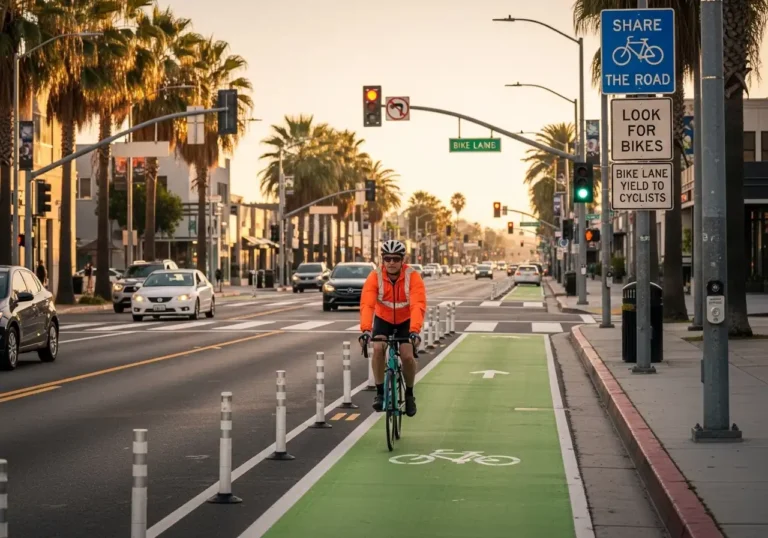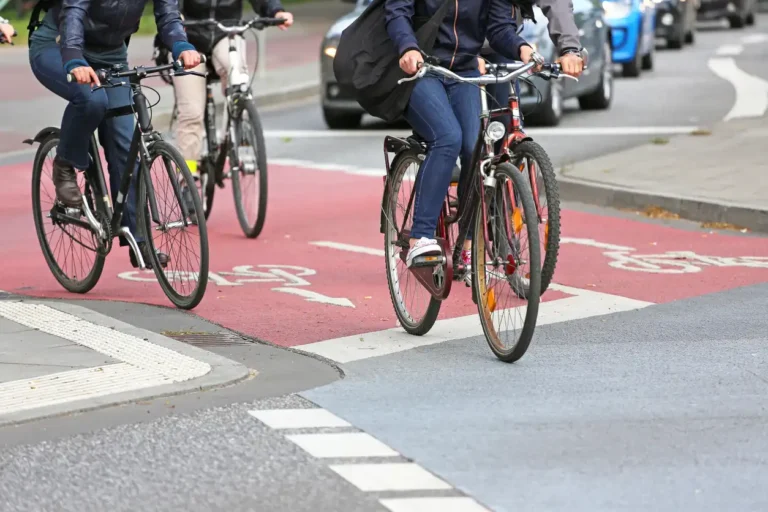If you’ve been involved in a bicycle accident, the steps you take immediately after the crash can have a significant impact on your ability to recover compensation for your injuries and damages. Gathering evidence is one of the most critical aspects of building a strong case, whether you’re pursuing a claim with your insurance company or filing a lawsuit. The evidence you collect will help determine who was at fault, the extent of your injuries, and the amount of compensation you may be entitled to.
In this blog, we’ll walk you through the essential steps for gathering evidence after a bicycle accident, including what to collect at the scene, the importance of medical documentation, and how a bicycle accident lawyer can help you with the process.
1. Stay Safe and Call for Help
The first priority after a bicycle accident is ensuring your safety and the safety of others involved. If possible, move to a safe area, away from traffic, to prevent further injury. Once you’re in a safe spot:
-
Call 911: Contact the police and report the accident. Even if it seems like a minor crash, a police report can be crucial to your case.
-
Seek medical attention: Even if you don’t feel injured right away, it’s important to seek medical attention. Some injuries, such as concussions or internal injuries, may not show immediate symptoms. Having a record of your injuries will also be important for any insurance claims or lawsuits.
Once you’ve ensured everyone’s safety and medical needs, it’s time to start collecting evidence.
2. Take Photographs of the Scene
Photographs are one of the most important types of evidence you can gather after a bicycle accident. Visual evidence can help paint a clear picture of what happened and who may be at fault. Here’s what you should photograph:
-
Your bicycle and any vehicle involved: Take clear photos of your bicycle, showing any damage caused by the accident. If another vehicle was involved, take photos of the vehicle’s damage as well.
-
The accident scene: Capture wide-angle photos of the entire scene, including any traffic signals, stop signs, bike lanes, and road conditions. These photos will help document where the accident took place and the surrounding conditions.
-
Skid marks or debris: If there are skid marks on the road, broken glass, or debris from the accident, take pictures. This can help demonstrate how the accident occurred, whether there was any sudden stopping, or if a vehicle was involved in the crash.
-
License plates: If a vehicle was involved in the accident and fled the scene, capturing the vehicle’s license plate number is crucial. If you can’t get the plate number, take photos of other identifying features of the vehicle, like the make, model, color, and any visible damage.
Photographs should be as clear and detailed as possible. Try to take multiple angles to ensure that all relevant evidence is captured.
3. Gather Contact Information and Statements from Witnesses
Witness statements can be key to determining fault in a bicycle accident. If there were any people who saw the accident take place, make sure to:
-
Collect witness information: Get the names, phone numbers, and addresses of anyone who witnessed the accident. This will allow your lawyer to follow up with them later if needed.
-
Get written or recorded statements: Ask witnesses to describe what they saw. If possible, have them write down their statements or record their testimonies with your phone. Be sure to ask for specific details, such as the actions of the driver, traffic conditions, or the sequence of events.
Witnesses can provide unbiased accounts of the accident, which can significantly strengthen your case, especially if there is a dispute over what happened.
4. Get the Police Report
If the police responded to the accident, they will create an official police report that documents key details of the accident. This report will include information such as:
-
The date, time, and location of the accident
-
Names and contact information of the parties involved
-
The officer’s observations and initial assessments of fault
-
Citations or tickets issued to any party involved in the accident
Request a copy of the police report as soon as it becomes available. This report can serve as important evidence in proving who was at fault, especially if it includes citations for violations like running a red light or driving recklessly.
5. Document Your Injuries and Medical Treatment
One of the most important aspects of gathering evidence after a bicycle accident is documenting your injuries. This will help establish the severity of your injuries and the link between the accident and your medical conditions. Here’s how to document your injuries:
-
Seek immediate medical attention: Even if you feel okay after the accident, it’s essential to get checked out by a doctor. Some injuries, such as concussions or whiplash, may not present symptoms right away. Keep a record of all medical treatments, including doctor visits, hospital stays, prescriptions, and surgeries.
-
Keep track of medical bills: Keep copies of all bills and receipts for medical treatments. This will be necessary when you file an insurance claim or seek compensation for your injuries.
-
Photograph visible injuries: If you have visible injuries like cuts, bruises, or abrasions, take photographs of them immediately and throughout the healing process. These photos can serve as visual evidence of the pain and suffering caused by the accident.
If your injuries require ongoing medical care, it’s essential to document the continued treatment and the impact the injuries have on your daily life.
6. Collect Insurance Information
If the accident involved another vehicle or another party, exchange insurance information with the driver. You’ll need the following details:
-
The driver’s name, address, and phone number
-
The name of their insurance company and policy number
-
The make, model, and license plate number of the vehicle
This information will be critical when filing an insurance claim for property damage, medical expenses, or pain and suffering. If the other driver fled the scene (in the case of a hit-and-run), report the incident to the police and your insurance company immediately.
7. Consult a Bicycle Accident Lawyer
Once you’ve gathered the evidence, the next step is to consult with a bicycle accident lawyer. An experienced lawyer can help you navigate the legal process, deal with insurance companies, and ensure that you receive the compensation you deserve.
Your lawyer will assist you in:
-
Assessing the evidence: A lawyer will help analyze the evidence you’ve gathered, identify key facts, and build a strong case for your claim.
-
Negotiating with insurance companies: Insurance companies often try to minimize payouts, and having a lawyer on your side ensures that you are not taken advantage of.
-
Representing you in court: If a fair settlement cannot be reached, your lawyer can take your case to court and fight for your rights.
8. Conclusion
Gathering evidence after a bicycle accident is crucial to protecting your legal rights and ensuring that you can recover the compensation you deserve for your injuries and damages. From photographing the scene to collecting witness statements and medical records, the evidence you collect will play a central role in proving your case. If you’ve been involved in a bicycle accident, don’t hesitate to reach out to an experienced bicycle accident lawyer who can help guide you through the process and fight for the best possible outcome.



